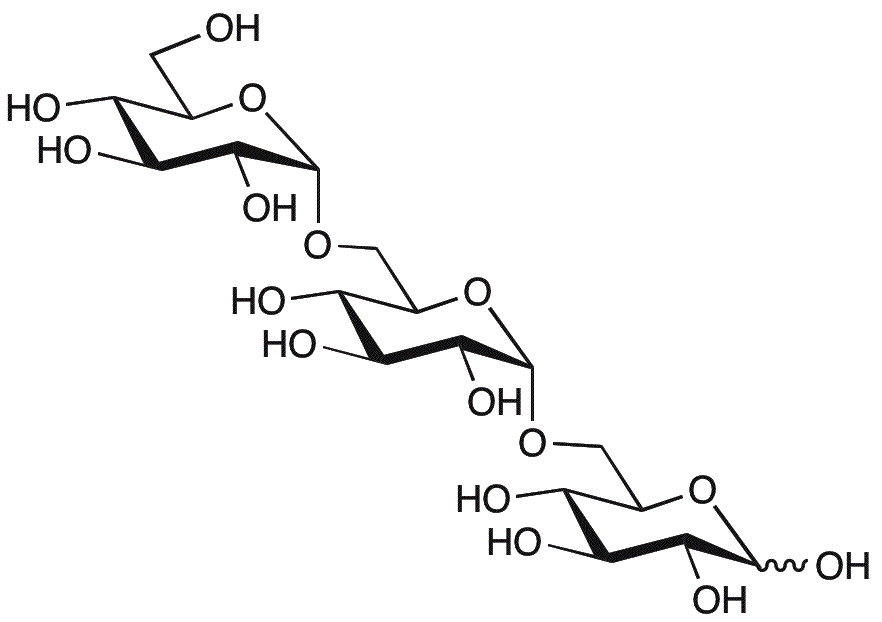Isomaltotriose is widely utilized in research focused on:
- Food Industry: It serves as a low-calorie sweetener, providing a sugar-like taste without the calories, making it ideal for sugar-free products.
- Pharmaceuticals: Used as a stabilizer in drug formulations, it helps enhance the solubility and bioavailability of active ingredients, improving medication effectiveness.
- Biotechnology: Acts as a substrate in enzyme assays, allowing researchers to study enzyme activity and kinetics in carbohydrate metabolism.
- Cosmetics: Incorporated in skincare products for its moisturizing properties, it aids in retaining moisture and improving skin texture.
- Animal Feed: Utilized as a prebiotic to promote gut health in livestock, enhancing digestion and nutrient absorption, which can lead to better growth rates.
General Information
Properties
Safety and Regulations
Applications
Isomaltotriose is widely utilized in research focused on:
- Food Industry: It serves as a low-calorie sweetener, providing a sugar-like taste without the calories, making it ideal for sugar-free products.
- Pharmaceuticals: Used as a stabilizer in drug formulations, it helps enhance the solubility and bioavailability of active ingredients, improving medication effectiveness.
- Biotechnology: Acts as a substrate in enzyme assays, allowing researchers to study enzyme activity and kinetics in carbohydrate metabolism.
- Cosmetics: Incorporated in skincare products for its moisturizing properties, it aids in retaining moisture and improving skin texture.
- Animal Feed: Utilized as a prebiotic to promote gut health in livestock, enhancing digestion and nutrient absorption, which can lead to better growth rates.
Documents
Safety Data Sheets (SDS)
The SDS provides comprehensive safety information on handling, storage, and disposal of the product.
Product Specification (PS)
The PS provides a comprehensive breakdown of the product’s properties, including chemical composition, physical state, purity, and storage requirements. It also details acceptable quality ranges and the product's intended applications.
Certificates of Analysis (COA)
Search for Certificates of Analysis (COA) by entering the products Lot Number. Lot and Batch Numbers can be found on a product’s label following the words ‘Lot’ or ‘Batch’.
*Catalog Number
*Lot Number
Certificates Of Origin (COO)
This COO confirms the country where the product was manufactured, and also details the materials and components used in it and whether it is derived from natural, synthetic, or other specific sources. This certificate may be required for customs, trade, and regulatory compliance.
*Catalog Number
*Lot Number
Safety Data Sheets (SDS)
The SDS provides comprehensive safety information on handling, storage, and disposal of the product.
DownloadProduct Specification (PS)
The PS provides a comprehensive breakdown of the product’s properties, including chemical composition, physical state, purity, and storage requirements. It also details acceptable quality ranges and the product's intended applications.
DownloadCertificates of Analysis (COA)
Search for Certificates of Analysis (COA) by entering the products Lot Number. Lot and Batch Numbers can be found on a product’s label following the words ‘Lot’ or ‘Batch’.
*Catalog Number
*Lot Number
Certificates Of Origin (COO)
This COO confirms the country where the product was manufactured, and also details the materials and components used in it and whether it is derived from natural, synthetic, or other specific sources. This certificate may be required for customs, trade, and regulatory compliance.


